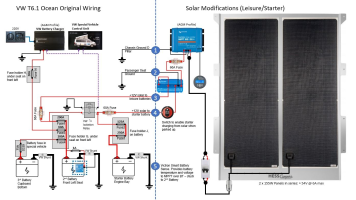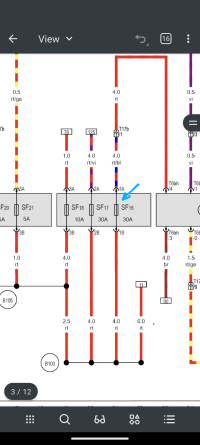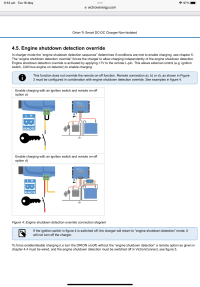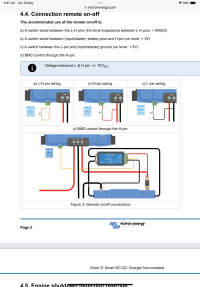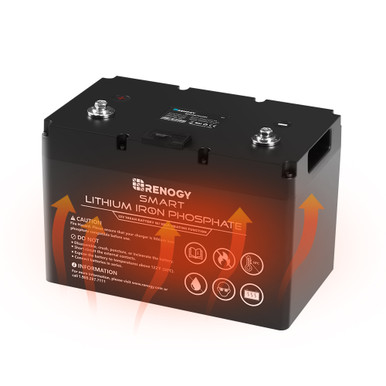I think the simplest solution is option b but using the split charge relay to drive the Orion 'on'. So in simple terms connect the black wire to the H pin, leave the L pin disconnected.
Then you should be able to disable engine shutdown detection and the Orion should only run when the old split charge relay would have been engaged. We know that this does not kill the starter battery and probably plays nicely with the start stop system. It's certainly a reasonable starting point I think -- you can modify the logic from there.
Thank you yet again Yossarian, that is a brilliant reply to what is me, overthinking things.
I have even been over on the Victron community and it seems to be a very confusing area to most there.
As I have it now with the link left in alone is an issue we’re the smart alternator stops or reduces voltage when suppling charge to the batteries when the starter battery is charged full, the alternator reduces this voltage lower than that set in the Victron shutdown parameter, thus shutting itself down and therefore no longer charges the leisure’s no matter what their state of charge is.
This was initially hidden from me as my roof solar was also banging the volts at the leisure’s.
so your initial post to me did raise this issue. So big thanks, I’m sure I’m not far from a solution.
I will have a play with that trigger wire.
On the very interesting and important point raised by California_Ocean re the hookup. For now I am still with the AGMs.
when I go LifePo4 it will need addressing somehow.
My main reason for going the LifePo4 is to avoid hookups especially in the UK.
my first thought on EHU if I had Lithium on board , it would be to just unplug the onboard charger as the solar would support the lithium.
the starter bat seems to be able to look after itself for most of the time.
Should (in my case) the starter ever needed a trickle, I did instal a break before make switch in phase 1 to allow the mppt to charge starter bat which I could use after changing the charge profile.
But I guess a more permanent solution will be sort.
Thanks again Yossarian and others for such great help. I will keep you posted on outcome and also update when I plan the Lithium’s.



